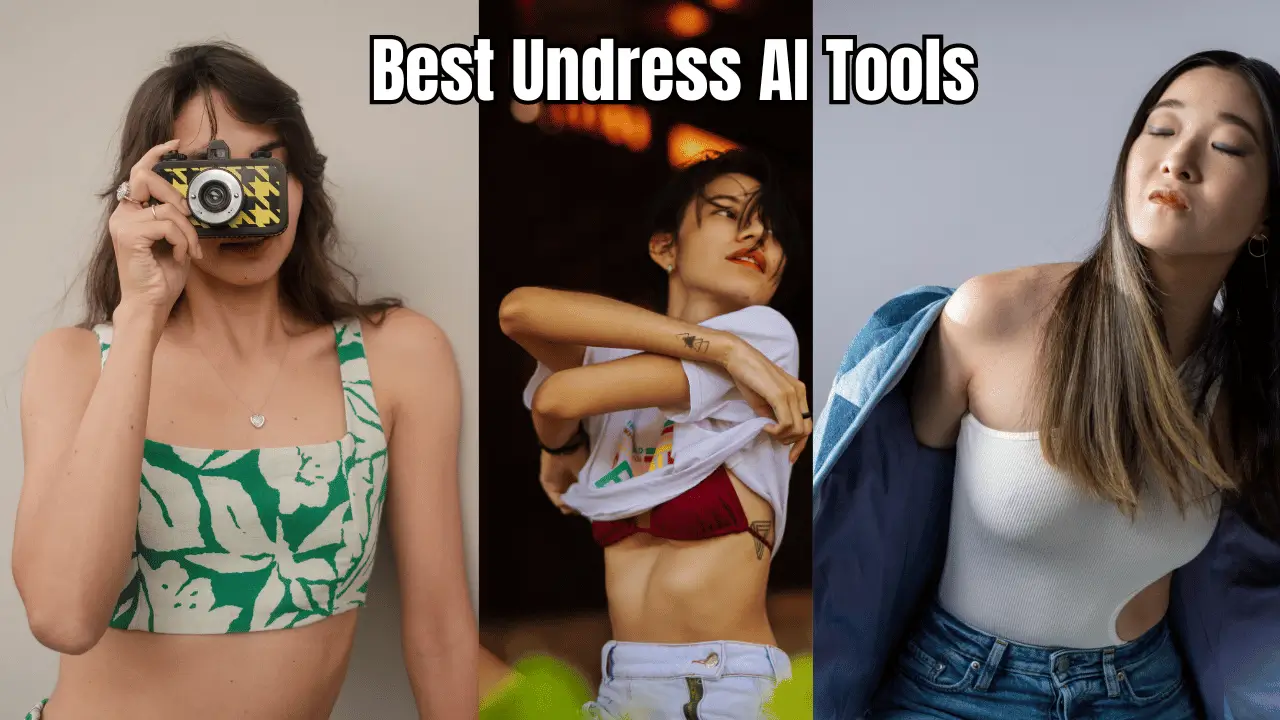Free AI Clothes Remover: Is It Safe? Find The Best Tools!
Ever wondered if technology could virtually redesign your wardrobe or, perhaps, erase it altogether? The emergence of AI clothes remover technology is rapidly changing how we interact with digital images, presenting both exciting possibilities and complex ethical considerations.
The digital landscape is witnessing a surge in tools powered by artificial intelligence that promise to alter or remove clothing from images with unprecedented ease. These AI-driven platforms, often marketed as "ai clothes remover" or "undress AI" services, leverage sophisticated algorithms to generate modified images. While some tout their applications in fashion design and artistic expression, the potential for misuse raises serious concerns about privacy and consent. The promise of a 100% free ai clothes remover is enticing, and many platforms do offer core features without immediate subscription fees. Users often have the chance to test these capabilities with free trials, sometimes limited to a certain number of uses per day. This accessibility, however, amplifies the need for a critical understanding of how these tools function and the ethical implications they carry.
| Topic | Description |
|---|---|
| AI Clothes Remover Functionality | AI clothes removers use advanced algorithms, often involving deep learning models like Stable Diffusion and Generative Adversarial Networks (GANs), to digitally alter images by removing clothing. They analyze the image, identify clothing items, and attempt to recreate the area underneath as realistically as possible. |
| Applications |
|
| Ethical Concerns |
|
| Examples of Tools |
|
| Pricing Models |
|
| Image Formats | Most tools support common image formats such as JPG, PNG, and WEBP, with size limits (e.g., 20 MB). |
| Alternative Applications | Besides clothing removal, AI-powered tools offer features such as:
|
| Reference Website | Example Website (This is a placeholder, replace with an actual relevant website) |
The functionalities touted by these ai clothes remover services range from simply altering outfits to creating entirely nude images. An ai clothes changer, for instance, allows users to digitally experiment with different clothing styles, colors, and patterns on a photo or video. This can be particularly useful for designers who want to visualize garments on various body types without producing physical prototypes. The tool leverages artificial intelligence to simulate how outfits be it a dress, suit, or bikini would appear on an individual. But the more controversial applications, like those offered by "Undress VIP" or tools advertised as "free undress ai," claim to remove clothing entirely, generating images that often depict the subject in a state of undress. Slazzer 3.0, for example, is marketed as a free undress ai tool available online, boasting the ability to remove clothes from images. Similarly, Unclothy is presented as an ai tool specifically designed to undress photos, utilizing advanced ai models to automatically detect and remove clothing, purportedly generating deepnude images.
- Filmyfly Your Guide To Bollywood Hollywood More Updated
- Bollyflix Your Guide To Streaming Bollywood Movies Online 2024
The mechanics behind these tools involve complex algorithms. Undress ai services typically employ deep learning, including models like stable diffusion and generative adversarial networks (GANs), to digitally generate versions of uploaded images where clothing is realistically removed. Pincel ai, for example, offers multiple options, and Anieraser's ai clothes remover is designed to help users remove clothing from images seamlessly. These advancements mean that ai clothes remover websites can go beyond traditional editing, offering users unprecedented control over image manipulation.
However, this power comes with substantial ethical baggage. The potential for misuse is immense. The creation of deepnude images without consent is a significant concern, representing a severe invasion of privacy and potentially leading to emotional distress and reputational damage. The very existence of tools designed for such purposes raises questions about the responsibility of developers and the need for stricter regulations. While some platforms claim to offer features such as customizable clothing removal styles, the fundamental issue remains: the technology can be easily used to create non-consensual and harmful content.
The debate around undress ai image editing highlights the tension between artistic expression and ethical considerations. While some argue that these tools allow for creative exploration, others emphasize the potential for exploitation and abuse. The line between harmless experimentation and harmful manipulation is often blurred, making it crucial to engage in a broader societal conversation about the ethical boundaries of AI-powered image editing. The accessibility of these tools, often available through messaging apps like Telegram as bots, further complicates the matter. This ease of access means that individuals with malicious intent can readily utilize these technologies, increasing the risk of non-consensual image creation and distribution.
- Filmyzilla 2025 Jaat Hindi Dubbed Is It Real More
- Kannada Movie Mania Finding New Releases Movierulz Insights
The use cases for ai clothes remover technology extend beyond simple image alteration. In fashion design, for example, these tools can revolutionize the prototyping process. Designers can visualize how garments fit and drape on different body types without the need for physical prototypes, saving time and resources. They can also enhance or modify images for artistic projects, ensuring a seamless and realistic finish. Furthermore, ai clothes changer tools can be used to swap outfits effortlessly, allowing users to explore new styles on their favorite images. The ability to change the cloth in a photo with a single click opens up new possibilities for virtual try-ons and personalized style recommendations.
Despite the potential benefits, the ethical concerns surrounding ai clothes remover tools cannot be ignored. The proliferation of apps promising "realistic, fast, and private nudify results" is alarming, highlighting the demand for such technology and the potential for its misuse. Comparing features, pricing, and free trials of these tools reveals a competitive landscape where the emphasis is often on ease of use and realistic results, rather than ethical considerations. The workflow for these tools is typically straightforward: users upload a photo, tap a button to erase the clothes using ai, and potentially swap it for a new outfit style. This simplicity makes it all the more crucial to address the ethical implications of the technology.
The discussion around ai clothes remover tools also touches upon the broader implications of artificial intelligence in our lives. As AI becomes increasingly integrated into various aspects of society, it is essential to develop ethical frameworks and regulations to govern its use. This includes addressing issues such as data privacy, algorithmic bias, and the potential for misuse. The debate surrounding ai clothes remover technology serves as a microcosm of these larger ethical challenges, highlighting the need for a responsible and thoughtful approach to AI development and deployment.
The allure of a 100% free ai clothes remover is understandable, given the potential applications and the desire to experiment with new technologies. However, users must be aware of the risks involved and the ethical implications of their actions. The ease with which these tools can be used to create non-consensual images underscores the need for a culture of respect and consent in the digital age. Education and awareness are crucial in preventing the misuse of these technologies and promoting responsible online behavior. It is also essential for developers to prioritize ethical considerations in the design and development of AI-powered image editing tools, implementing safeguards to prevent their misuse and protect the privacy of individuals.
The future of ai clothes remover technology is uncertain, but one thing is clear: the ethical challenges it presents cannot be ignored. As AI continues to evolve and become more sophisticated, it is essential to engage in ongoing dialogue about its implications and to develop policies that promote responsible innovation and protect the rights and dignity of all individuals. The debate surrounding ai clothes remover tools serves as a critical reminder of the need for ethical frameworks and regulations to govern the use of AI in the digital age. The promise of instant gratification and creative freedom must be balanced against the potential for harm and the importance of respecting individual privacy and consent. Only then can we harness the power of AI for good and mitigate the risks it poses to society.
In conclusion, while the ai clothes remover technology offers innovative possibilities in fashion and digital art, the ethical concerns surrounding its potential misuse are substantial. As AI-driven tools become increasingly accessible, it is crucial to foster a culture of respect and consent in the digital realm. Developers, policymakers, and users must collaborate to ensure that these technologies are used responsibly and ethically, prioritizing individual privacy and preventing the creation of non-consensual content. The future of AI-powered image editing depends on our collective commitment to ethical principles and the responsible development and deployment of these powerful tools.
The transformative capabilities of these ai clothes remover technologies also spark discussions about the evolving landscape of digital art and creativity. The ability to seamlessly alter images and experiment with virtual clothing opens new avenues for artistic expression and design innovation. However, this raises questions about the authenticity and originality of art created using AI-powered tools. As algorithms become more sophisticated, it becomes increasingly difficult to distinguish between human-created and AI-generated art, challenging traditional notions of authorship and creativity. This necessitates a reevaluation of artistic values and the criteria by which we judge the merit of creative works in the digital age.
Moreover, the accessibility of ai clothes remover tools raises concerns about the democratization of image manipulation. While empowering individuals to express their creativity and experiment with digital imagery, it also democratizes the potential for misuse. The ability to easily create and share altered images can contribute to the spread of misinformation and the erosion of trust in visual media. This underscores the need for media literacy education and the development of critical thinking skills to help individuals discern between authentic and manipulated images. It also highlights the importance of responsible content sharing and the ethical considerations that should guide our online behavior.
The legal framework surrounding ai clothes remover technology is also evolving. As the technology becomes more prevalent, lawmakers are grappling with how to regulate its use and address the potential harms it poses. This includes considering issues such as data privacy, intellectual property rights, and the creation and distribution of non-consensual content. The legal challenges are complex, as existing laws may not adequately address the unique characteristics of AI-powered image editing. New legislation and regulations may be necessary to protect individuals from the misuse of these technologies and to ensure that they are used in a responsible and ethical manner. This requires a collaborative effort between lawmakers, technologists, and ethicists to develop legal frameworks that balance innovation with the protection of individual rights.
Furthermore, the economic implications of ai clothes remover technology are worth considering. The rise of AI-powered image editing tools has the potential to disrupt various industries, including fashion, advertising, and entertainment. The ability to virtually prototype clothing designs and create realistic simulations can reduce costs and streamline production processes. However, this may also lead to job displacement and the need for workers to acquire new skills to adapt to the changing demands of the labor market. It is important to anticipate and address the economic consequences of AI adoption to ensure that the benefits are shared broadly and that workers are not left behind.
The development of ai clothes remover technology also raises questions about the role of human agency in the creative process. As AI becomes more capable of generating realistic and aesthetically pleasing images, it is tempting to rely on algorithms to do the work of artists and designers. However, it is important to recognize that AI is ultimately a tool that is used by humans. The creative vision and artistic judgment of human beings are still essential in shaping the final product. AI can augment and enhance human creativity, but it cannot replace it entirely. The challenge is to find the right balance between human and machine intelligence, leveraging the strengths of both to create art that is both innovative and meaningful.
Moreover, the long-term societal impact of ai clothes remover technology is still unknown. As AI becomes increasingly integrated into our lives, it is important to consider the potential consequences for our values, beliefs, and social norms. The ability to easily manipulate images and create virtual realities can blur the lines between truth and fiction, potentially leading to a decline in critical thinking and a greater susceptibility to manipulation. It is essential to cultivate a culture of skepticism and to encourage individuals to question the information they encounter online. This requires a concerted effort from educators, media organizations, and technology companies to promote media literacy and responsible online behavior.
In addition to the ethical, legal, and economic considerations, the technical challenges of ai clothes remover technology are also significant. Creating algorithms that can accurately and realistically remove clothing from images is a complex task that requires sophisticated machine learning techniques. The algorithms must be able to identify clothing items, understand their shape and texture, and reconstruct the underlying anatomy in a plausible manner. This is particularly challenging when dealing with complex clothing patterns, occlusions, and variations in lighting and pose. Ongoing research and development are needed to improve the accuracy and reliability of these algorithms and to address the limitations of current technology.
Finally, the future of ai clothes remover technology will depend on the choices we make today. As a society, we have the power to shape the development and deployment of these technologies in a way that aligns with our values and promotes the common good. This requires a collaborative effort between developers, policymakers, ethicists, and the public to establish ethical guidelines, regulations, and best practices that govern the use of AI-powered image editing tools. By engaging in open and honest dialogue about the potential benefits and risks of these technologies, we can ensure that they are used responsibly and ethically, and that their benefits are shared by all.
- Vegamovies Netflix Your Guide To Hindi Dubbed Movies 2024
- What Is Bollyflix Your Guide To Streaming Bollywood Movies Online

6 Best and Free Undress AI Tools to Remove Clothes. WishfulThemes

Undress AI Free Tool How to Remove Clothing from Any Image

Undress AI Create Deepnude for FREE